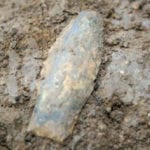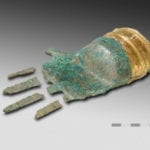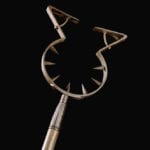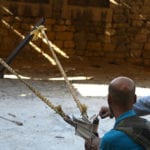 Technology
Technology  Technology
Technology  Humans
Humans 10 Everyday Human Behaviors That Are Actually Survival Instincts
 Animals
Animals 10 Animals That Humiliated and Harmed Historical Leaders
 History
History 10 Most Influential Protests in Modern History
 Creepy
Creepy 10 More Representations of Death from Myth, Legend, and Folktale
 Technology
Technology 10 Scientific Breakthroughs of 2025 That’ll Change Everything
 Our World
Our World 10 Ways Icelandic Culture Makes Other Countries Look Boring
 Misconceptions
Misconceptions 10 Common Misconceptions About the Victorian Era
 Mysteries
Mysteries 10 Strange Unexplained Mysteries of 2025
 Miscellaneous
Miscellaneous 10 of History’s Most Bell-Ringing Finishing Moves
 Technology
Technology Top 10 Everyday Tech Buzzwords That Hide a Darker Past
 Humans
Humans 10 Everyday Human Behaviors That Are Actually Survival Instincts
 Animals
Animals 10 Animals That Humiliated and Harmed Historical Leaders
Who's Behind Listverse?

Jamie Frater
Head Editor
Jamie founded Listverse due to an insatiable desire to share fascinating, obscure, and bizarre facts. He has been a guest speaker on numerous national radio and television stations and is a five time published author.
More About Us History
History 10 Most Influential Protests in Modern History
 Creepy
Creepy 10 More Representations of Death from Myth, Legend, and Folktale
 Technology
Technology 10 Scientific Breakthroughs of 2025 That’ll Change Everything
 Our World
Our World 10 Ways Icelandic Culture Makes Other Countries Look Boring
 Misconceptions
Misconceptions 10 Common Misconceptions About the Victorian Era
 Mysteries
Mysteries 10 Strange Unexplained Mysteries of 2025
 Miscellaneous
Miscellaneous 10 of History’s Most Bell-Ringing Finishing Moves
Top 10 Unusual Ancient Weapons
Mankind always has, and always will, fight wars. And in order to fight said wars, man needed weapons. Using whatever skills and resources they had, man built tools that would slash, smash, pierce and tear their enemies. Every nation had weapons that made their armies unique. Today when we talk about ancient weapons we immediately think swords, spears, bows and axes. But I find interest in weapons that strike me as out of the norm. This list is an assortment of weapons that have designs, backgrounds or usages that I find rather out of the ordinary. If you feel like anything is excluded or missing from the list, remember there exists a comment section for you to do with as you will!
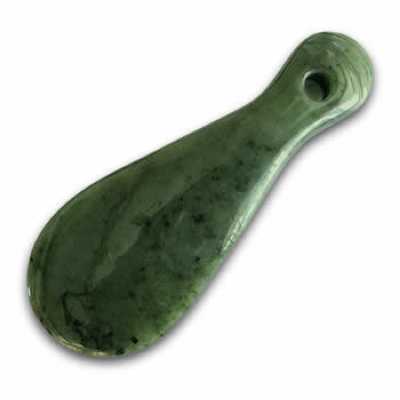
Used by the Māori tribes of New Zealand, this simple-looking, yet solid, club was built from nephrite jade. Strangely enough, the Māori used the 12-20 inch club for jabbing and thrusting instead of swinging downward blows in the way that most other clubs are used. To the Māori, the mere was a very spiritual weapon. They named their mere clubs and passed them down through generations. They even believed that the clubs contained a mana (spiritual force) of their own. The Māori revered their mere clubs greatly. They were a symbol of leadership, and if any mere that was considered important by a tribe was misplaced, great efforts were taken by the tribe to make sure the mere was located and returned to its respective owner.
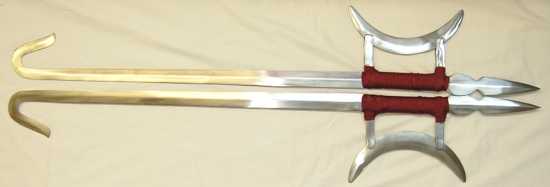
Perhaps the most well-known on this list, the Chinese hook swords were wielded by the normally passive Shoalin monks of northern China. Beautifully and artistically designed, the blades were curved into a hook shape at the end which allowed the user to connect the blades by the tip and wield them as a single, long-ranged weapon. The crescent shaped guards were excellent at blocking blows as well as slashing enemies who got too close. The ends of the hilts were sharpened into daggers for stabbing at close range. These swords measured from 4-6 feet from the top of the hook to the end of the sharpened hilt. The blades saw most of their usage from civilians, as the Chinese military did not use them in any of their armies.
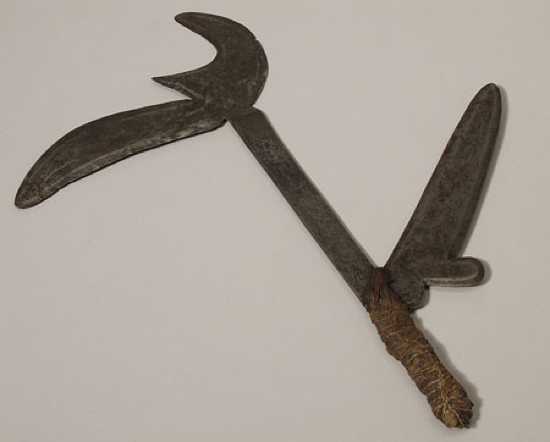
The kpinga was a throwing knife that was used by experienced warriors of the Azande tribe. The Zande people were residents of Nubia, a region in Africa composed of northern Sudan and southern Egypt. The knife (also known by its nickname, the Hunga Munga) was up to 22 inches long and had three blades that extended from the center. The blade closest to the handle is in the shape of a man’s genitals, and represented the masculine power of its owner. The alignment of the blades on the kpinga drastically increased the chances of impaling a target on contact. When the owner of the weapon was married, he presented the kpinga as a gift to the family of his wife.

The macuahuitl was basically a large, sword-shaped piece of wood, with razor-sharp pieces of obsidian embedded in the sides. Since the macuahuitl lacked a sharp point, it couldn’t be used as a stabbing weapon; however the jagged rows of obsidian gave the weapon a vicious tearing power that could cut deep lacerations in the enemy. The wood itself is heavy and strong enough to clobber opponents, thus enabling the Aztec to capture the foe alive to be used in their famous ritual sacrifices. There have been accounts of maquahuitls being able to decapitate horses, which is impressive, for a horse’s head is a good deal thicker than that of an adult human being.
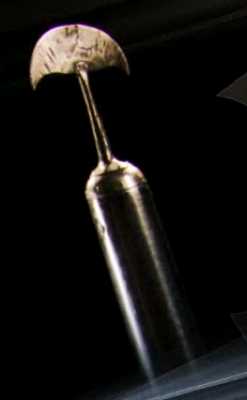
This rather odd-looking weapon was used in the arenas by the gladiators of the ancient Roman Empire. Interestingly enough, the gladiators who wielded the scissor in combat were also known as scissors. The metal casing at the bottom formed a long tube that covered the gladiator’s arm, allowing the weapon to easily block and parry, as well as counterattack. Made from hardened steel, the scissor measured up to one and a half feet long. It is surprisingly light, weighing in at an easy 5-7 pounds; this allowed the scissor to be wielded with a good amount of speed. The scissor’s unique shape and design made it a crowd favorite.
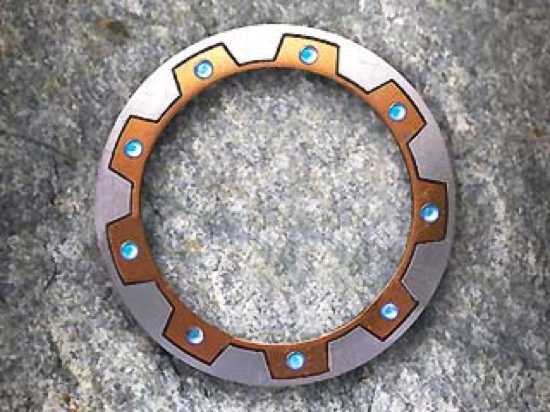
Don’t be fooled, the chakram is not something you would want to play frisbee with. Unlike the frisbee, the chakram was often thrown vertically rather than horizontally. The deadly circle of metal was up to a foot in diameter. It’s extremely sharp edge ensured that the chakram could slice off arms and legs with ease. This weapon originated from India, where it was used extensively by the high ranking Indian Sikhs. Much like a distant relative, the shrunken, the chakram could be stacked one on the other and thrown repeatedly. One interesting throwing method used by professional warriors was to spin the chakram on their index finger, and then, with a sharp flick of the wrist, launch the whirring blade at their opponent.
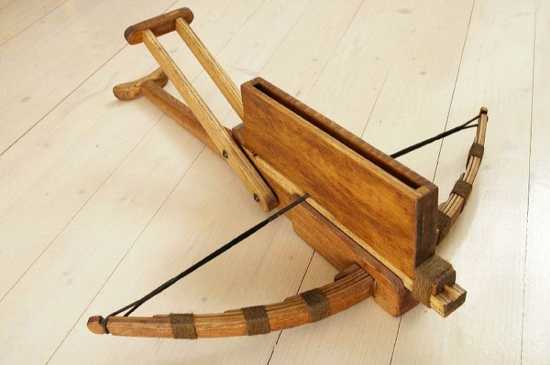
Another Chinese weapon, the chu ko nu was basically an ancestor to the automatic rifle – it sacrificed range and power for a quick reload time. The wooden case on the top of the crossbow held 10 crossbow bolts which fell into place when the rectangular lever on the back was pulled back after firing a bolt. One interesting fact is that the chu ko nu last saw its use in the Sino-Japanese wars of 1894-1895, years after the rise of firearms. The crossbow could fire on average a total of 10 bolts within 15 seconds. Which, when compared to the reload speed of normal bows and crossbows, is a great improvement. For added effectiveness, some of the bolts were tipped with poison from the deadly aconite flower, also known as wolfsbane.

Now I have to hand it to the Chinese, their weapons have made four entries on my list. Third place is taken by the nest of bees, or flying fire. Basically it was a wooden container filled with tubes in the shape of a hexagon, which, when viewed from the front, gave the weapon the appearance of a large honeycomb. Inside each of the tubes was a rocket propelled arrow. The rockets launched the arrows with more power and range than that of a traditional bow. Up to 32 arrows could be launched from a nest at once. The Chinese would fire thousands of bees’ nests at once, killing plenty of enemies within seconds.
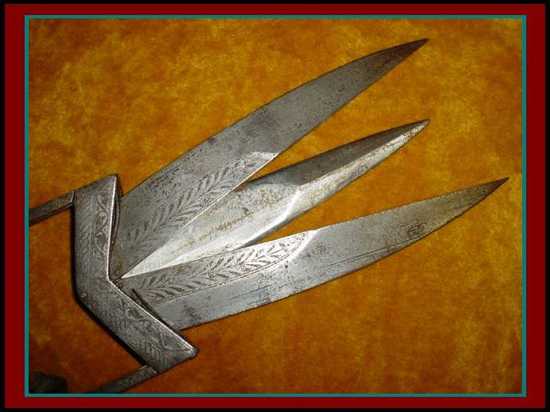
This Indian weapon gave its owner the claws of wolverine, minus the strength and cutting power of adamantium. The katar at first glance has a single blade, however when a trigger on the h-shaped handle was activated, the blade would split into three, one on the middle and one on each side. The three blades not only made the weapon more effective at stabbing and slashing, but they also intimidated and/or startled the opponent. The blade’s positioning on the handle also allowed it to easily block attacks. Its unusual design has yet another purpose – the triple blades could easily stab through all kinds of Asian armor with ease.
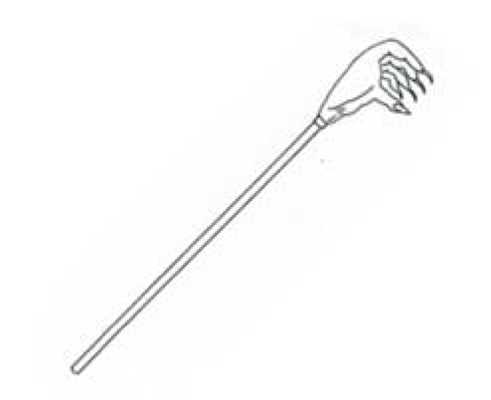
One look at this incredibly odd-looking device was more than enough to convince me that it deserved the number one place on this list. Yet another Chinese weapon, the zhua’s conspicuous iron “hand” at the end had sharp claw-like nails that would impale flesh, and then tear it off from the body. The sheer weight of the zhua was enough to kill the opponent, but the claws made it even deadlier. When wielded by a professional, it could be used to pull mounted soldiers off their horse. But the main use of the zhua was to pull off the shields of enemies, leaving them exposed to the clawed hand of iron.
